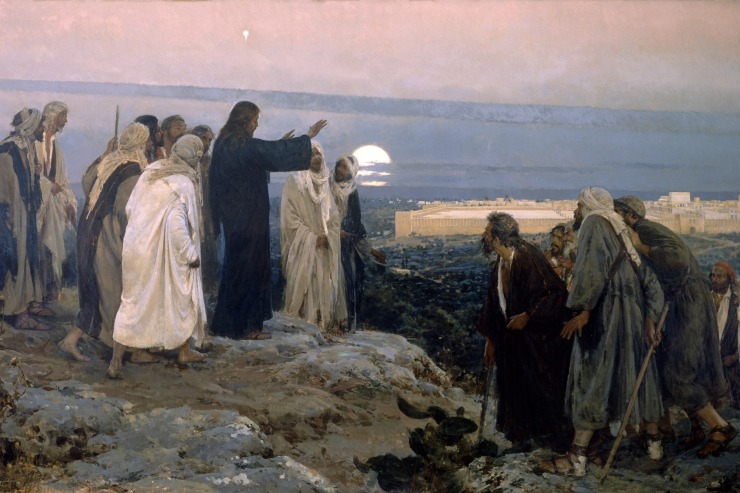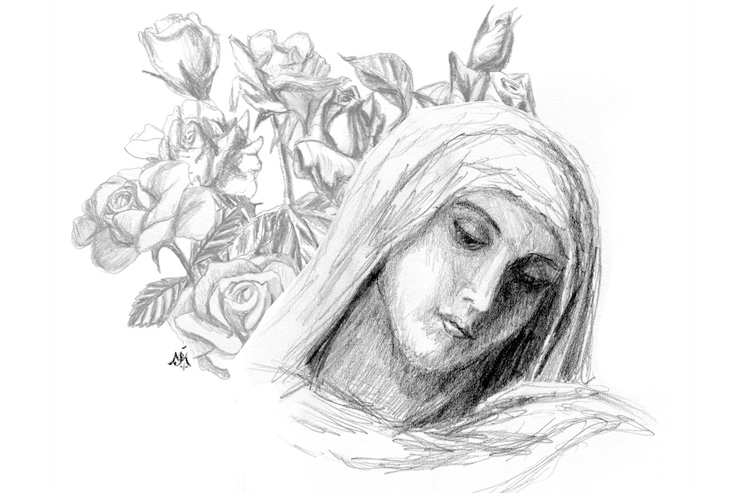I stood on the Mount of Olives and looked across at Jerusalem, the skyline a mix of old and new. The light blue dome of the Holy Sepulchre seemed to almost touch the dominant gold Dome of the Rock, and the Western Wall was invisible to my eye but present in my thoughts. I saw a crowded Mount Moriah that visibly proclaimed complexity and tragedy.
Over 150,000 graves cover the Mount of Olives, facing the city and the site of the Temple: Jews awaiting the resurrection of the dead, when they believe the Messiah will come and rebuild the Temple. Their feet are facing the Temple Mount, ready for his coming.
I stood there, on the spot tradition tells us Jesus wept over the city.
“Would that even today you knew the things that make for peace! But now they are hid from your eyes. For the days shall come upon you, when your enemies will cast up a bank about you and surround you, and hem you in on every side, and dash you to the ground, you and your children within you, and they will not leave one stone upon another in you; because you did not know the time of your visitation” (Luke 19:42-44).
Jesus Christ loves his people: the Chosen People. He loves the Holy City. As he looked out across the Kidron Valley, he could see what was going to happen in less than forty years. He saw the destruction and the desecration, the loss of life and the atrocities against the sacred. He saw the siege and fall of Jerusalem. And he wept.
Even then, the hill was a place of graves. Even then, it was place of expectation. And here he had come, in fulfilment of the prophecy. He had come to enter the city as the Son of David on this Palm Sunday. But he knew what would happen by the end of the week. He could see the destruction of the Temple in 70 AD, and he could see the destruction of the New Temple, His Body, that following Friday.
And he wept. He wept human tears. He felt human feelings. He loved with a human heart: a love and a heart that was rejected.
This is the scene that comes to my mind when I think of the Sacred Heart. We have all seen the images of Christ offering us his heart, and but to me, this scene of Christ weeping over his people, over their future, over their rejection, is my image of the Sacred Heart.
Because he was weeping over me, too. A few nights later, he would be at the bottom of the Mount of Olives, and he would be in such extreme agony he would sweat drops of blood. He would experience the loneliness of sin and the emptiness of rejection. He would see my sins, he would see my rejection, he would see the pain that would have otherwise been avoided—if I had just known the time of my salvation.
Jesus Christ, true God and true man, loves you with a human heart. He accepted a human nature knowing that it brought pain and suffering. As anyone who has ever loved knows: to love with a human heart is to open one up to rejection and hurt. To love with a human heart is to accept the possibility of a broken human heart.
“Jerusalem, Jerusalem… how many times I yearned to gather your children together, as a hen gathers her young under her wings, but you were unwilling!” (Mt 23:37)
I could substitute my name for Jerusalem. How many times have I been unwilling?
Pope Pius XII, in his beautiful encyclical Mystici Corporis Christi, wrote, “Now the only-begotten Son of God embraced us in His infinite knowledge and undying love even before the world began. And that He might give a visible and exceedingly beautiful expression to this love, He assumed our nature in hypostatic union: hence—as Maximus of Turin with a certain unaffected simplicity remarks—”in Christ our own flesh loves us.” But the knowledge and love of our Divine Redeemer, of which we were the object from the first moment of His Incarnation, exceed all that the human intellect can hope to grasp. … In the crib, on the Cross, in the unending glory of the Father, Christ has all the members of the Church present before Him and united to Him in a much clearer and more loving manner than that of a mother who clasps her child to her breast, or than that with which a man knows and loves himself” (n.75).
He loves us with human flesh, a human heart, with human emotions. But he’s also God, and He knows and loves us better than we know and love ourselves.
We should never forget the pain we caused our Lord by our sins. But we cannot remain there, either. Because he has an all-merciful heart. He wants to welcome us home, he wants to call us back, he wants to clasp us to His breast. No matter what we have done, no matter how many times we have rejected him—He wants to turn our sorrow into joy and rejoice with us.
The mystery of the Sacred Heart is that we have caused Him great pain—but we also cause Him great joy. Take refuge in the Sacred Heart, which has loved you to the point of being pierced. He now shows you that pierced heart—not so that you’ll despair in your guilt, but so that you’ll know the extent of His Love.
Jesus, meek and humble of heart, make my heart like unto Thine!
















